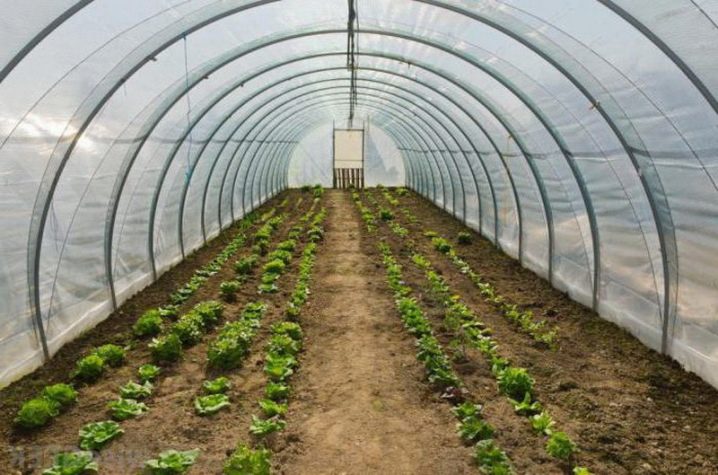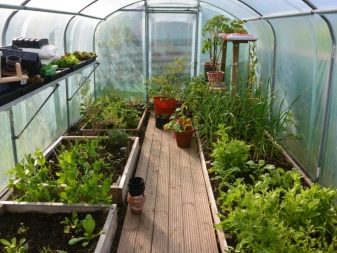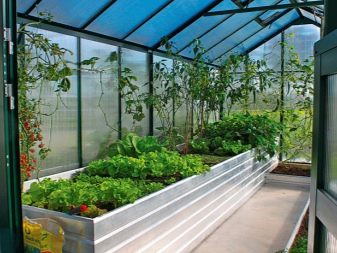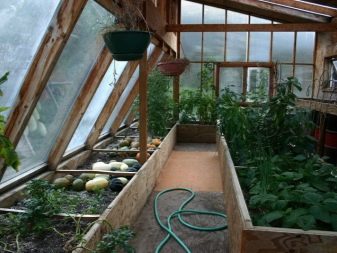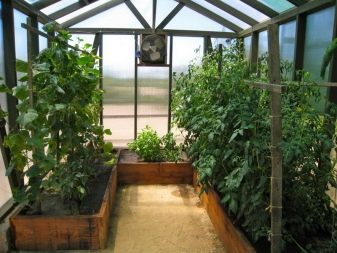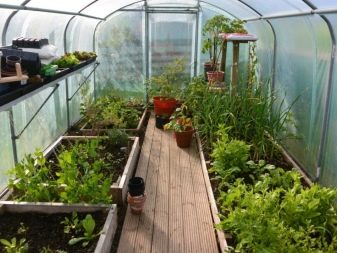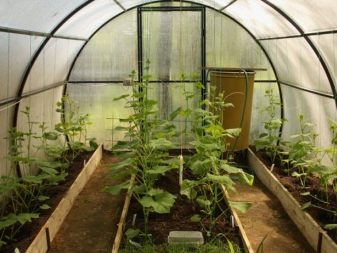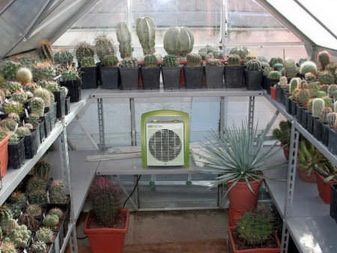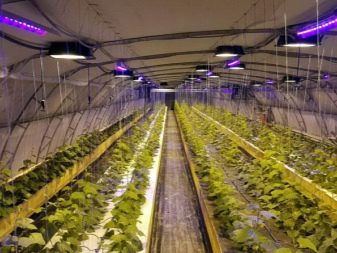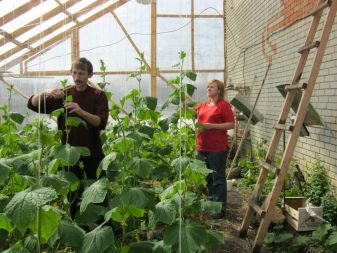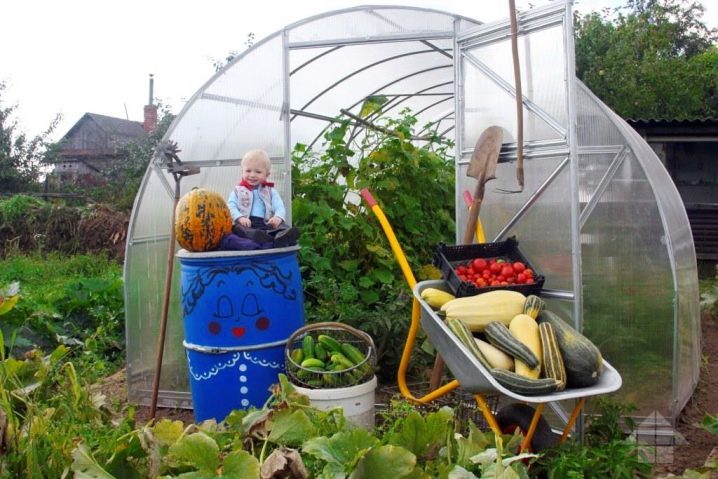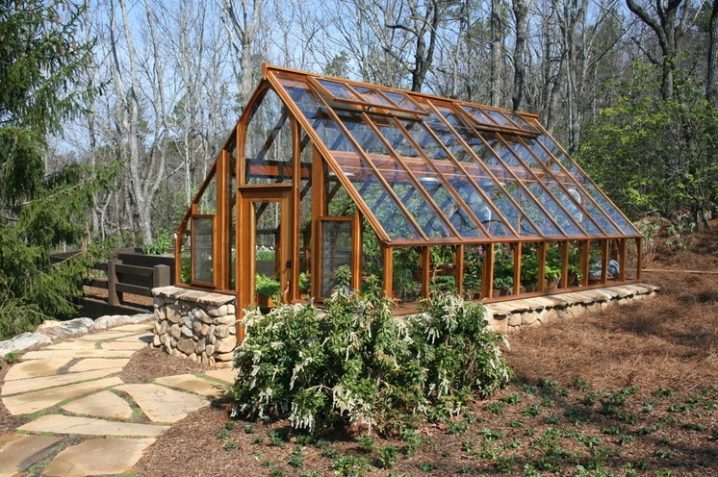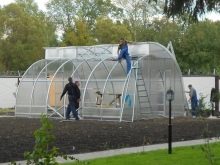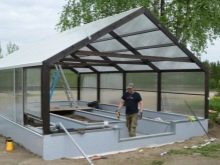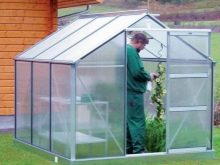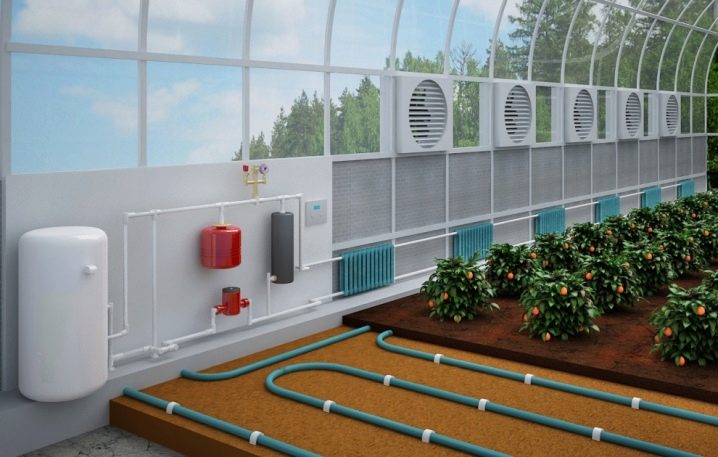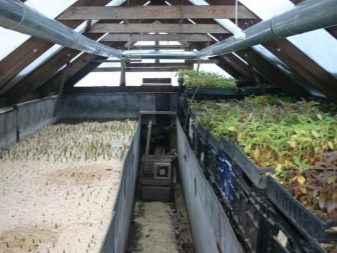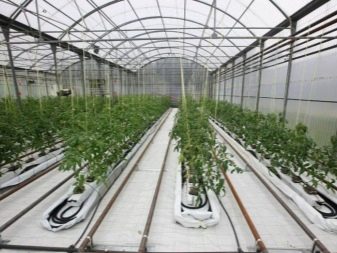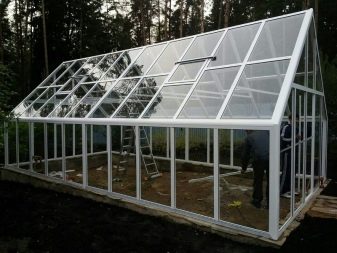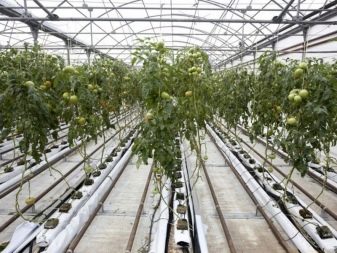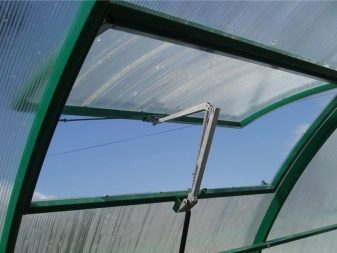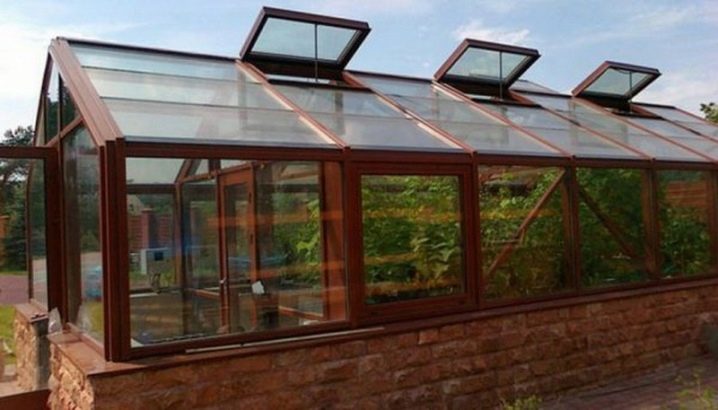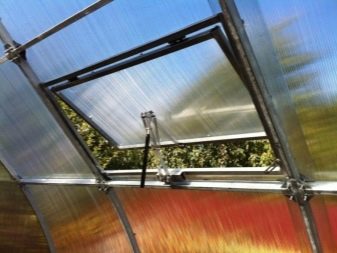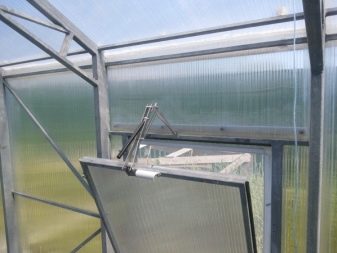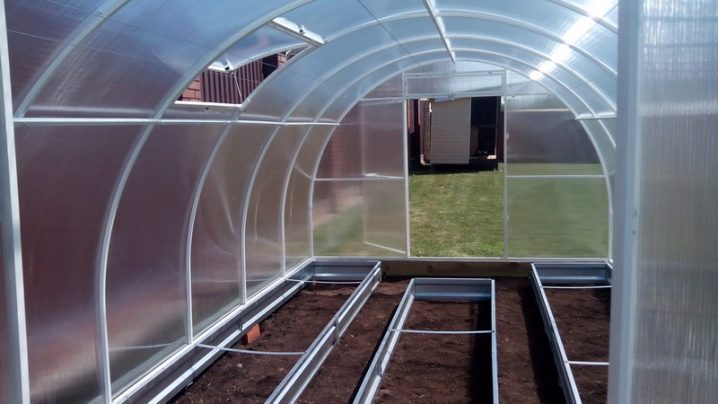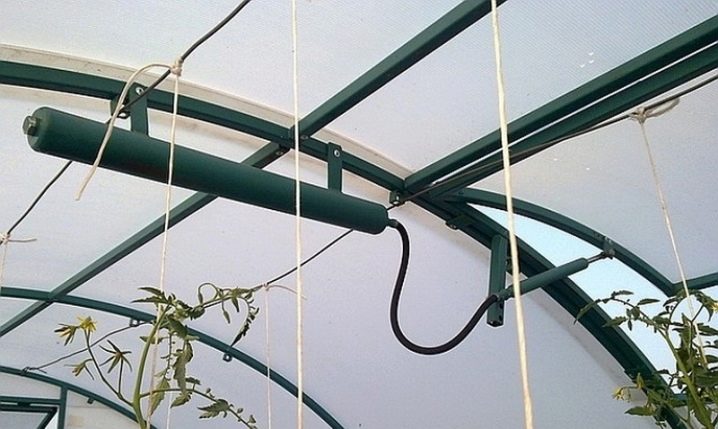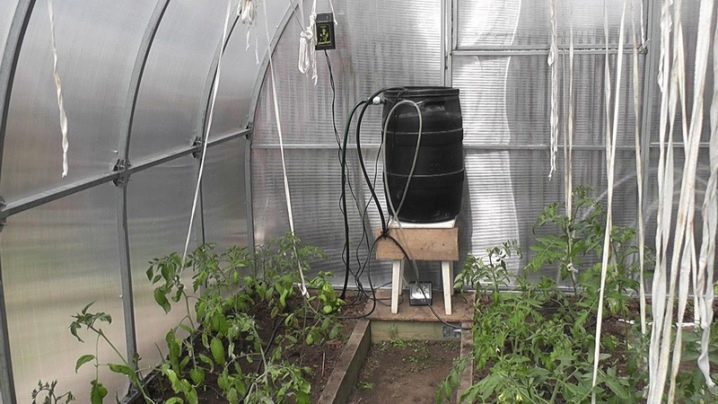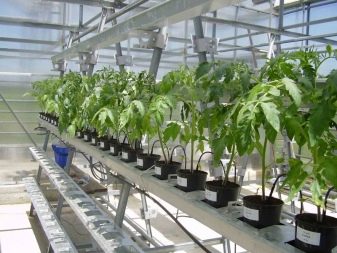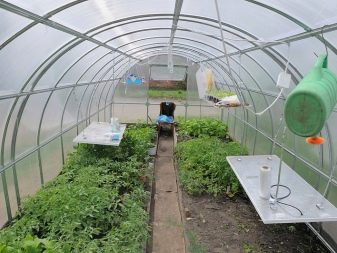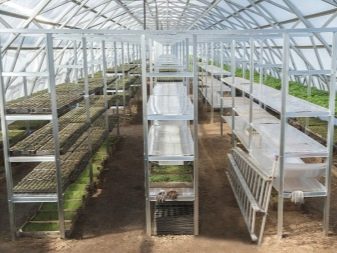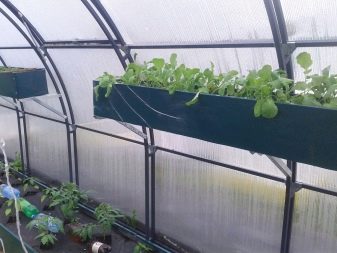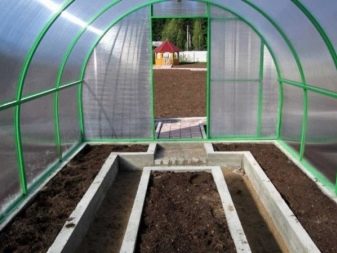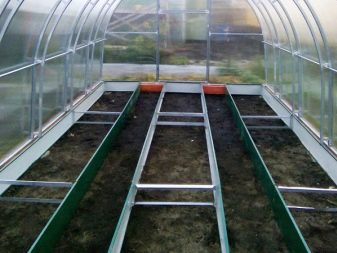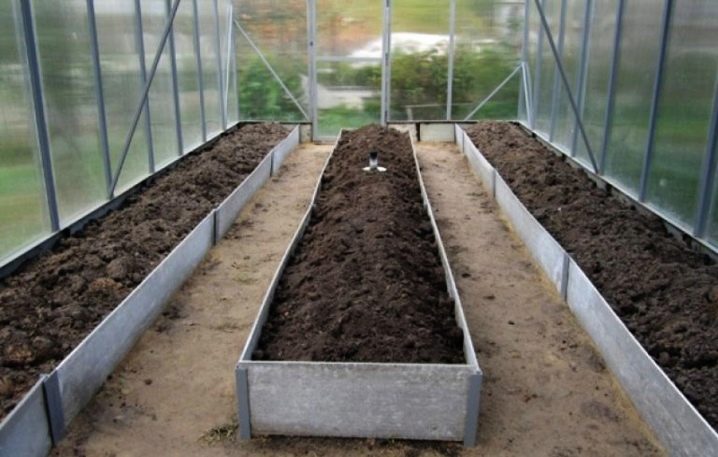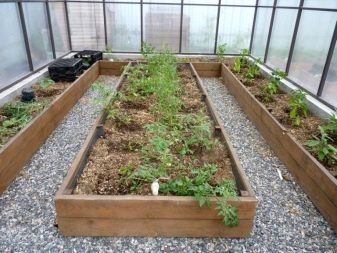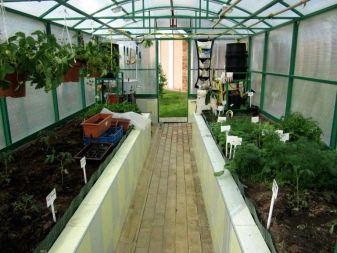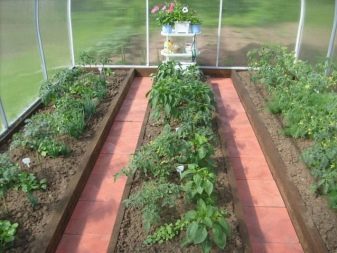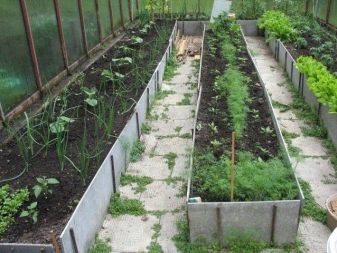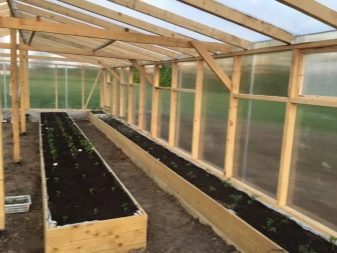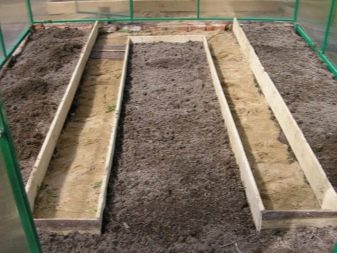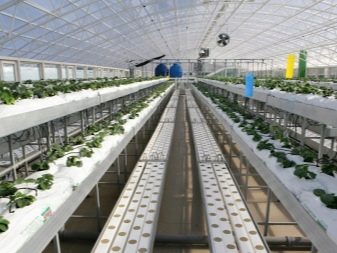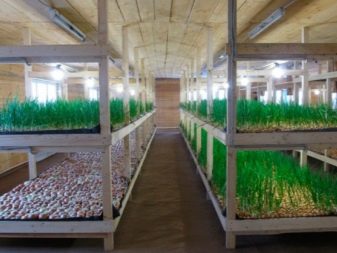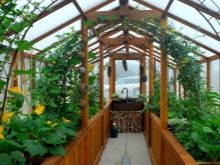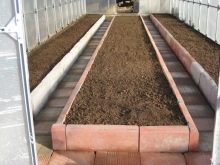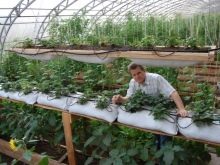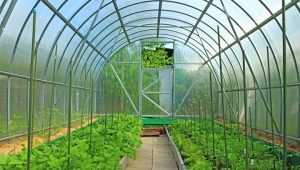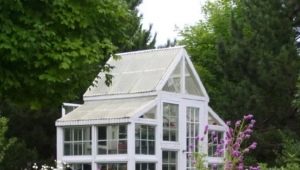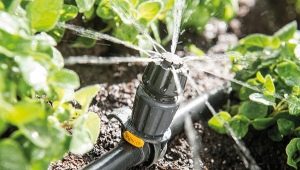Arrangement of greenhouses inside: planning tricks
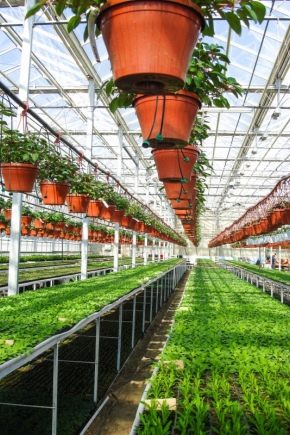
To obtain a good harvest from the greenhouse, it is important to maximize the efficiency of all its space. To do this, you should think carefully and then organize the internal arrangement of the greenhouse structure. This article will discuss the basic principles of improvement of greenhouses, the planning of beds and placement of plantings in it.
Features and types of design
The main functions of the greenhouse.
- Plant protection from external negative factors. These include cold precipitation, frost, strong wind, night temperature drop.
- Preservation of optimum temperature for plantations.
Greenhouses are of different types and can be made of various materials.The size of the greenhouse structure and the tricks of the internal layout depend on the type of crops and plants that will be grown indoors.
The simplest option is a greenhouse of ordinary window frames. This design can only be operated during the warm season. Usually it is a small area for the cultivation of 1-2 types of crops.
More durable and durable is a polycarbonate construction. It is lightweight and easily mounted on a prepared frame. Such a greenhouse can be of different sizes, up to impressive areas.
Without additional insulation, such constructions are also suitable for operation only in a season with a positive temperature.
The most complex and versatile structure is a greenhouse, which involves growing plants throughout the year. This design should have thermal insulation. It is also equipped with a heating system to maintain the desired temperature level in the winter.
Greenhouse for year-round use requires installation of lighting. In the autumn-winter period, the light day is very short; for crops that are grown inside, additional light feed will be required.
Also, the space inside the greenhouse can be organized under various methods of growing plants. If it is supposed to be cultivated in the ground, then the breakdown of the beds is made. If the cultivation of plants will be made in pots, boxes or containers, installation of shelving will be required.
Sizes and shapes
A greenhouse can be used to grow only one crop in it. For example, to get a crop of cucumbers, a small (3x3 meter) construction is quite sufficient. It can be made of glazed frames or polycarbonate sheets on a light frame.
If it is assumed that 2-3 types of plants will be grown in greenhouses, it is better to provide a more spacious internal space. The best option would be with dimensions of 3x6 meters.
To obtain a large number of crops or the cultivation of many types of crops will require the installation of a greenhouse structure measuring 3 by 8 or more meters.
There are also greenhouse facilities of non-standard square shape. Polycarbonate greenhouses most often have a semicircular shape.This allows not to accumulate a large amount of snow or ice on the roof of the structure. In addition, the rounded vault makes it possible to tie up tall and curly cultures. This form of the frame gives a small additional height space.
Less commonly, greenhouse structures have a triangular roof. It is advisable for a large area of construction. If the greenhouse structure is collapsible and is dismantled for winter, the roof can be flat or with a small slope.
The drawings of the greenhouse construction are designed based on the conditions of use, the desired amount of the crop and the types of plants grown.
How to equip?
After the installation of the greenhouse construction, the main task of the farmer is to create the most favorable conditions for growing crops in closed ground.
This task can be divided into the following sub-clauses:
- providing enough heat;
- optimal layout and breakdown of beds;
- arrangement of tracks;
- soil preparation for planting;
- ensuring sufficient ventilation to prevent overheating of the air inside the structure;
- in the case of year-round operation of the greenhouse providing heating and lighting in the cold season;
- if necessary installation of racks for installation of containers and pots with plantings.
Heating
Maintaining optimal temperature conditions in the structure of a closed ground is actually the main task. Especially carefully to work out the issue of providing heating is required for winter constructions with closed ground.
To ensure the flow of natural heat from the sun into the greenhouse, the coating is made of transparent materials. It is also worth taking care that the temperature in the greenhouse does not drop much at night.
To do this, you can use the following techniques.
- The stone accumulates well and keeps it warm for a long time. After the sun stops heating the greenhouse, it can still serve as a source of heat for some time. Stones can be laid out on beds or by paving paths. The greater the area and number of elements of stone material, the longer it will be able to heat and give more heat.
- Water is also able to maintain temperature and release heat from its surface. In the greenhouse, you can arrange containers, preferably dark or black. During the day, the water in them will warm up, and at night and in the evening slowly cool, while maintaining the temperature in the greenhouse.
It is worth noting that the above methods for maintaining the temperature are not heating methods. They will only help reduce heat loss during the summer season. To provide additional heating of the greenhouse construction, the installation of more complex equipment will be required.
The main options for providing heating greenhouses:
- the use of heating appliances;
- installation under the tracks and beds of heated floor;
- the use of water or gas heating;
- installation of infrared heating equipment;
- installation of a stove for firewood firewood.
To maintain the temperature inside the structure, it is important to take care of reducing heat loss.
Especially careful thermal insulation require winter greenhouses.
- In the cold period, it is better to change the vents in the greenhouse on the double-glazed windows.The reinforced glass unit will not only create an additional barrier to heat outflow, but also significantly reduce the formation of condensate.
- A greenhouse that will be operated year-round is usually attached to the wall of a heated building.
- With the onset of cold weather, additional insulating means are installed inside the greenhouse. These can be blinds, shutters, curtains of soft insulating materials.
- It is necessary to take care of the insulation of the foundation. A rather large heat transfer occurs through the soil.
- Strong wind contributes to the intensive cooling of the greenhouse. Therefore, the structure must be protected from wind exposure by any structure (fence, other building, dense hedge).
Ventilation
No greenhouse can do without ventilation, especially during the hot summer months. Excessive temperature rise and the absence of air flow to the plants is no less destructive than cold. In the greenhouse must be installed several vents. Best of all, if they are automated.
The simplest and least expensive option is to install the opening window with hydrauliclever. The essence of his work is very simple. Inside the lever shaft there is an oily liquid of a certain density. When the temperature inside the greenhouse rises to a certain threshold, the liquid that begins to increase in volume pushes the lever. Thus the transom or pane begins to open. With a subsequent increase in temperature, the lever is pushed out more and more. When the temperature decreases and the liquid is compressed, respectively, the transom gradually closes.
Such a simple system, which, by the way, can be mounted with your own hands, allows for automatic ventilation of the greenhouse.
The second option is to install a computer with sensors. The device will continuously receive data on the humidity and temperature inside the greenhouse. In accordance with the specified parameters, the system will control the opening and closing of the vents and vents.
Such equipment is quite expensive and will require additional costs for installation and connection. In addition, only specialists can correctly install and configure such a system.However, it does allow to regulate the main indicators of the microclimate inside the greenhouse, up to the creation of individual temperature conditions for individual beds with different plantings.
Water supply
In the case of growing plants and crops in a structure with a closed ground, it is not necessary to count on natural rainfall. Therefore, watering plantings need to organize yourself. In a small greenhouse, it is quite possible to do with a watering can. But all the plants planted in large buildings, it is not so easy to pour by hand. The best option for watering plants in closed ground is drip irrigation system. For its arrangement, you will need a water intake container, plastic pipes and flexible hoses.
Drainage system that delivers moisture to the roots of plants, is arranged according to the bed plan. And the capacity from which irrigation water intake will be made should be installed at a certain elevation. This is necessary to create pressure in the irrigation system. The big plus is that drip irrigation can be fully automated.For this, the entire system is connected to an automatic timer or computer. Soil irrigation will be carried out strictly according to specified parameters.
Beds and racks
Improvement of the internal space of the greenhouse for various types of plantings is a very important point. The arrangement of beds or racks should be arranged in such a way that the plantations are in conditions favorable for their growth and maturation.
However, do not forget about the design of the internal space of the greenhouse structure. A design that pleases the eye will undoubtedly contribute to a good mood and pleasant emotions while working in the greenhouse.
How to arrange?
The arrangement of the structure from the inside includes a breakdown of the beds. First of all, the location of plots for plantings will depend on the size of the greenhouse and on its position relative to the sun. It is also worth considering the peculiarities of crops and plants cultivated indoors.
For small-sized greenhouses (up to 3 meters wide), the most convenient option is the arrangement of two parallel beds adjacent to the side walls. In the middle of the beds divided track.The width of areas with plantings should be about 100-120 cm. In this case, it will be possible to have unhindered access to all plants.
A rectangular greenhouse with a width of 4 meters or more can be divided into 3 or more parallel beds. Between the beds are also arranged paths for passage. It is advisable to plan the space so that the tracks are at least 40 cm wide, otherwise the passage through them will be simply inconvenient and difficult.
In a square-shaped greenhouse, beds can be arranged in parallel rows. Another rather convenient option in this case is the arrangement of sites for plantings along the walls of the greenhouse structure. Another area for planting crops remains in the very center of the greenhouse. The path leading from the entrance frames the central plot with plantings and at the same time allows access to the plants planted in the beds along the walls.
What to do?
It is very undesirable to leave the paths earthen, completely without coverage.
The tracks can be equipped using the following materials:
- rubble;
- brick;
- tile;
- tile;
- a rock;
- ruberoid.
The beds need to be done just above the level of the paths.And so that they do not crumble and crawl, their edges should be strengthened. This can be done by building on the sides of the mini-fence.
The most simple and affordable option is laying boards. The required width of the board is installed on the edge along the edge of the garden and dug into the ground. To further strengthen this formative fence, you can drive small pegs near the board so that it can rest on them.
More reliable, but time consuming is laying out the borders of brick or small concrete blocks.
If plants are grown in containers, boxes or pots, construction of racks for them will be required. It is worth noting that this is a very convenient method of cultivation. In addition, racking designs with plantings look very aesthetically pleasing. Moreover, the shelves can be arranged in several tiers, thereby increasing the number of plantations, and, consequently, the harvest.
Installing racks will require leveling and strengthening the floor in the greenhouse. It can be laid out with any durable material, such as brick or tile. A durable and reliable option is to fill the surface of a pre-leveled floor with concrete.
The racks themselves are made of wood, steel or metal.For greater stability, their legs can be fixed on the floor, filled with concrete.
Successful examples
It is possible to equip the internal space of a large greenhouse by combining beds and shelves.
For low plants, a multi-level construction of shelves is constructed, which can be located above earthen beds.
The tracks can be decorated in Japanese style using large flat stones.
In the winter greenhouse often equip a kind of "vestibule" or "canopy". This is a small space separating the entrance from the room with plantings. "Tambour" prevents heat loss in the cold season.
How to equip the greenhouse inside, see the following video.
